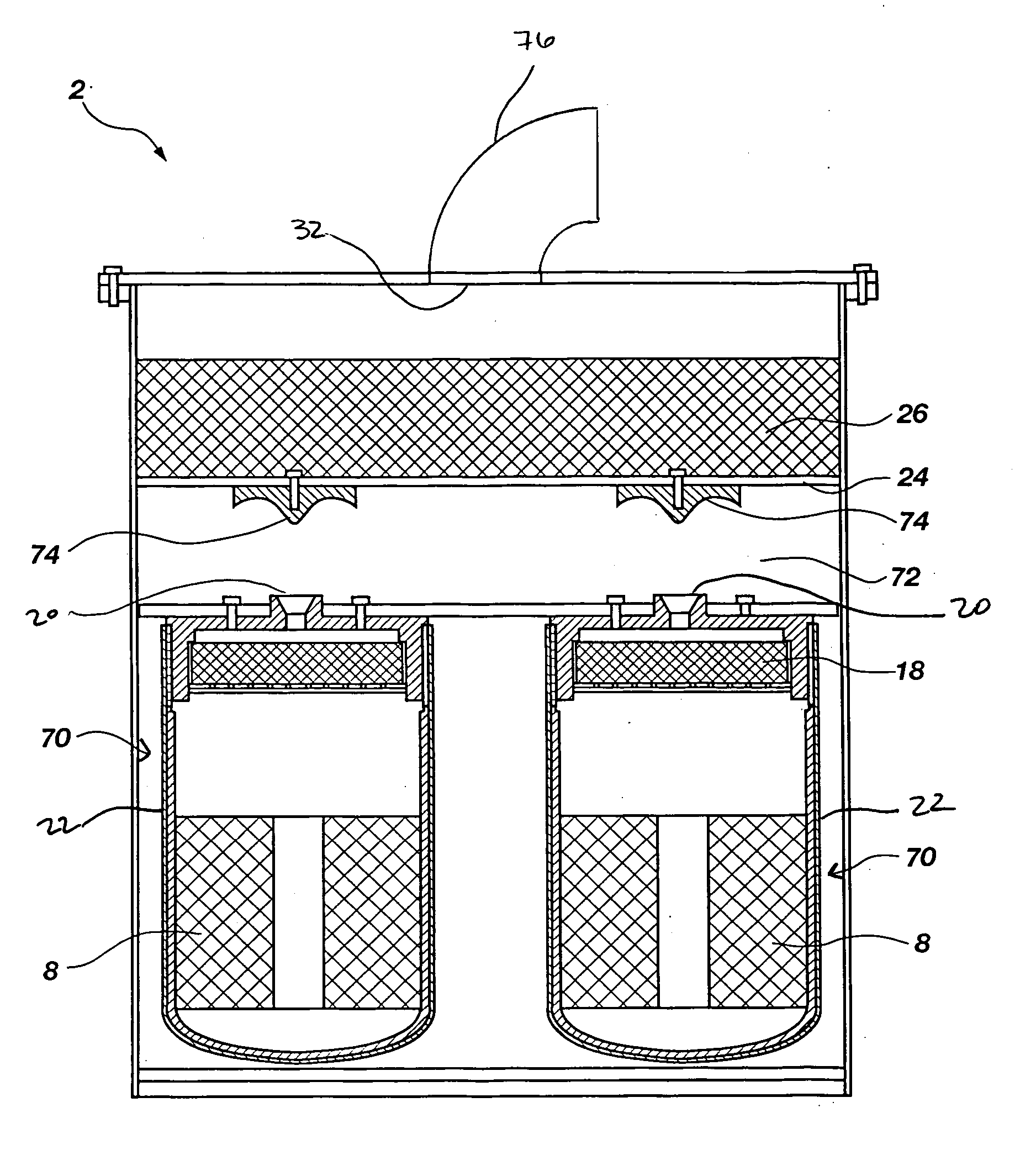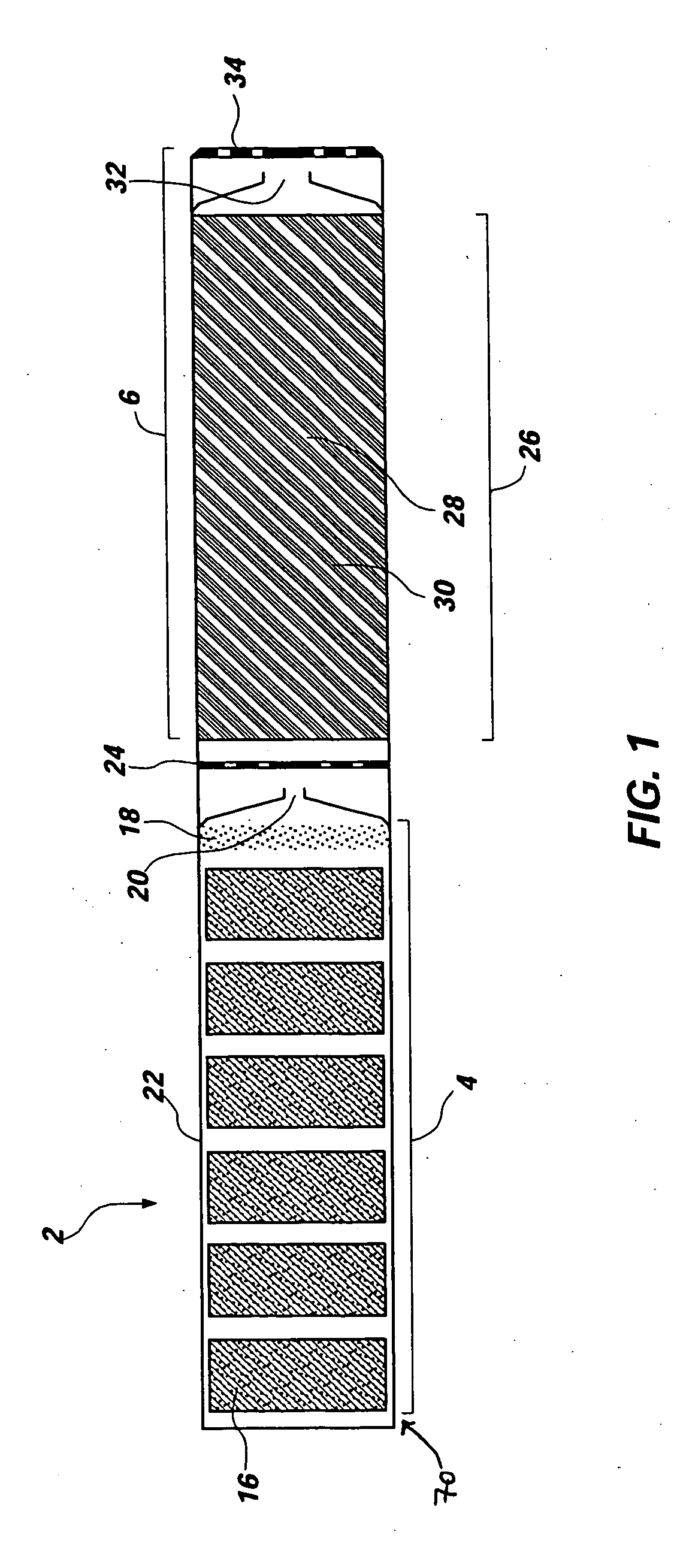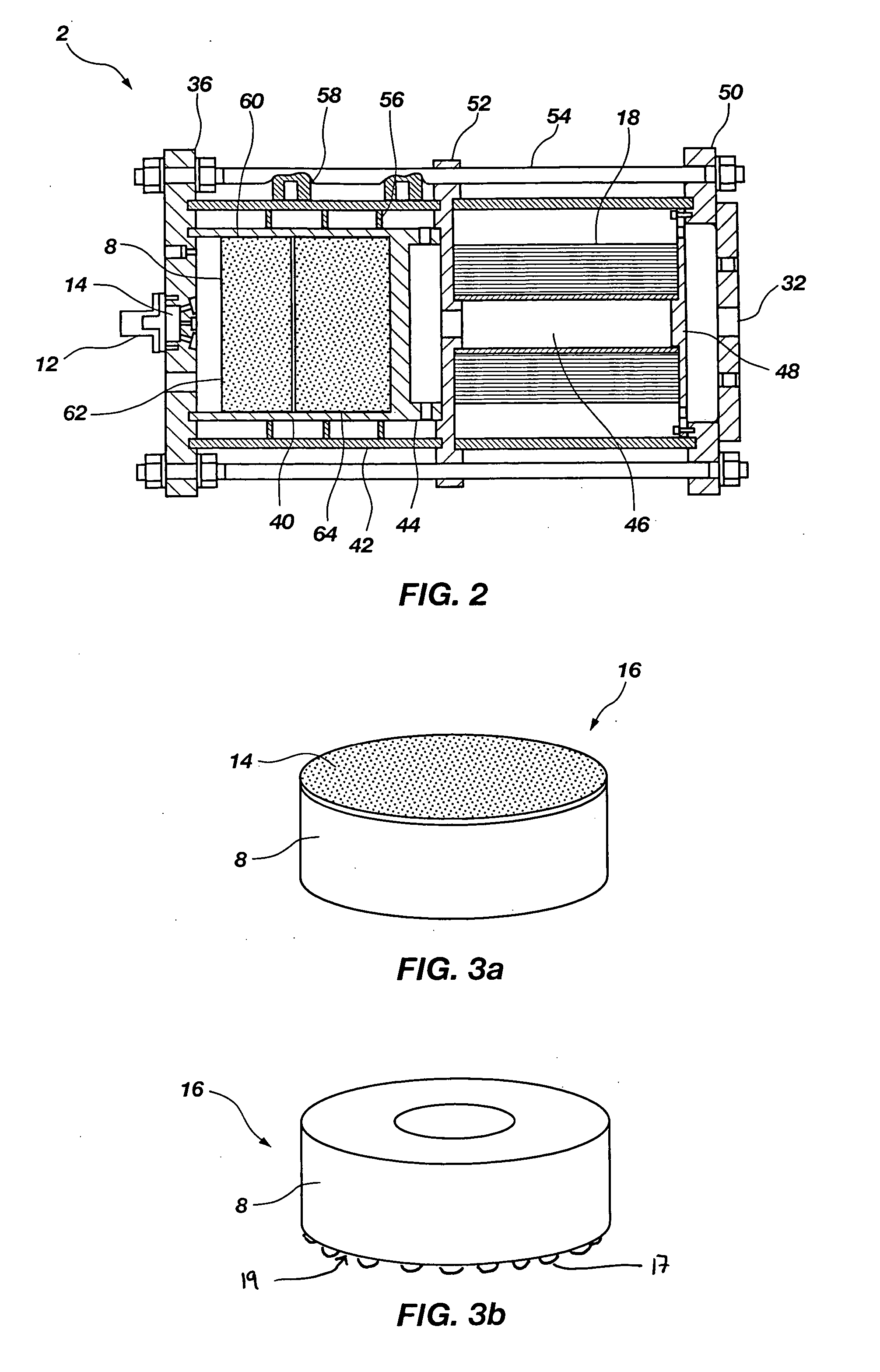Man-rated fire suppression system and related methods
a fire suppression system and man-rated technology, applied in fire extinguishers, medical science, dental surgery, etc., can solve the problems of adding bulk and hardware to the fire suppression system, sub>2 /sub>cannot be used to extinguish fires, and chemically reactive halogen radicals
- Summary
- Abstract
- Description
- Claims
- Application Information
AI Technical Summary
Benefits of technology
Problems solved by technology
Method used
Image
Examples
example 1
A HACN Gas Generant Produced Using a Slurry Reactor
[0074] A gas generant including HACN, BCN, and Fe2O3 was produced in the slurry reactor. A 10 liter baffled slurry tank was filled with 4,900 grams of distilled water and stirred with a three blade stationary impeller at 600 revolutions per minute (“rpm”). A glycol heating bath was used to heat the water to 180° F. After the water temperature reached 180° F., 586.1 g of technical grade HACN was added to the mixer and stirred at 600 rpm for 10 minutes to allow the HACN to dissolve. 111.64 g of BCN and 18.56 g of Fe2O3 were dry blended together in a Nalgene™ quart container. 100 g of distilled water were then added into the blended BCN / Fe2O3 and stirred for 5 minutes until an even suspension was made. 58 g of this suspension of BCN / Fe2O3 / water was then injected slowly into the mix bowl with a 30 cc syringe while mixing rapidly. The slow addition of solid into the mix bowl allows for better oxidizer distribution in the mix. The heatin...
example 2
A HACN Gas Generant Produced by Vertical Mixing
[0075] A five gallon Baker Perkins vertical mixer was filled with 10,857 g of distilled water and stirred at 482 rpm. The mix bowl was heated to 165° F. After the water temperature reached 165° F., 3,160.0 g of recrystallized HACN was added into the mixer and stirred slowly at 482 rpm for 15 minutes to allow the HACN to partially dissolve and break up any clumps. 1,800 g of Cu2O and 720 g of TiO2 were then dry blended by sealing a five gallon bucket and shaking it. The mixer was stopped and the walls and blades were scraped down to incorporate any material that may have migrated up the mix blades. Then, the blend of Cu2O and TiO2 was added to the mix bowl and mixed for 15 minutes at 482 rpm. The mixer was stopped and the walls and blades were scraped down to incorporate any material that may have migrated up the mix blades. Then, 3,160 g of recrystallized HACN was added into the mix bowl and mixed for 15 minutes at 482 rpm. The mixer w...
example 3
A HACN Gas Generant with Organic Binder Produced by Vertical Mixing
[0076] To a one gallon Baker Perkins vertical mixer, 2,730 g of recrystallized HACN and 35 g of granular Cytec Cyanamer N-300 polyacrylamide were added. The two solids were blended for two minutes, after which 1,750 g of deionized water was added. The resulting slurry was mixed for 15 minutes. The mixer was stopped and the walls and blades were scraped down to incorporate any material that may have migrated up the mix blades.
[0077] In a two-gallon plastic container with a snap-on lid, 630 g of American Chemet Corp. UP13600FM cupric oxide and 105 g of DeGussa P-25 titanium dioxide were preblended by vigorous shaking. Then, the blend of cupric oxide and titanium dioxide was added into the mix bowl and mixed for 5 minutes. The mixer was stopped and the walls and blades were scraped down to incorporate any material that may have migrated up the mix blades. The resulting paste was then mixed for an additional 15 minutes...
PUM
 Login to View More
Login to View More Abstract
Description
Claims
Application Information
 Login to View More
Login to View More - R&D
- Intellectual Property
- Life Sciences
- Materials
- Tech Scout
- Unparalleled Data Quality
- Higher Quality Content
- 60% Fewer Hallucinations
Browse by: Latest US Patents, China's latest patents, Technical Efficacy Thesaurus, Application Domain, Technology Topic, Popular Technical Reports.
© 2025 PatSnap. All rights reserved.Legal|Privacy policy|Modern Slavery Act Transparency Statement|Sitemap|About US| Contact US: help@patsnap.com



